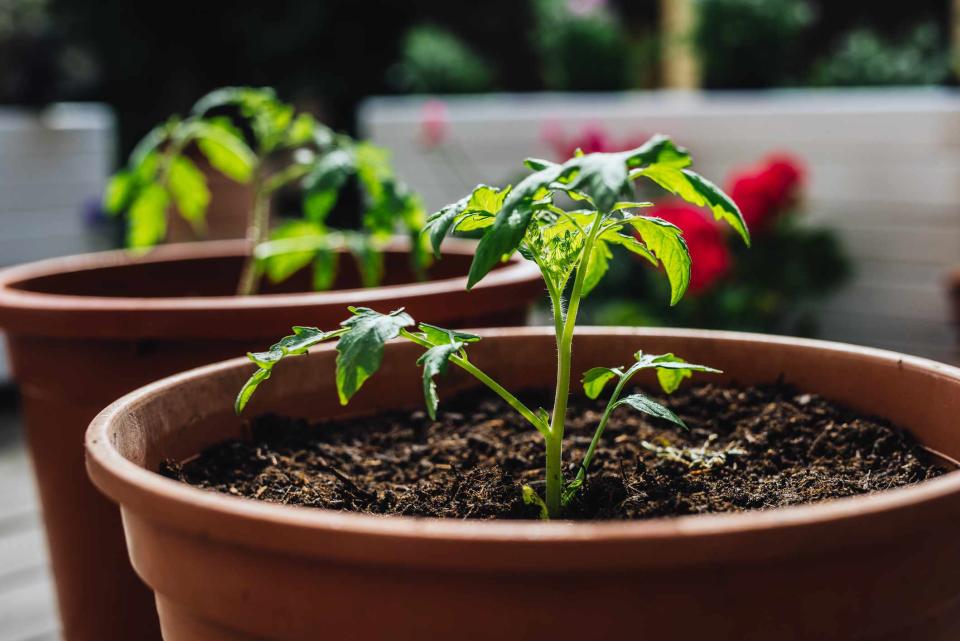4 Tips for Growing Tomatoes in Cooler Temperatures
When spring weather doesn't cooperate, here's what to do

Guido Mieth / Getty Images
The birds are chirping, the rain is falling, and the sun is shining more often than not. After a long and dark winter, this can only mean one thing: tomato season.
But tomato plants are notoriously fragile—birds love to pick at them, the sun can dry them out, and they’re easily hurt by freezing. Much of the country has been experiencing a cooler than normal spring, so many gardeners are wondering what that means for their tomatoes.
When Is Tomato Season?
Tomato season spans from late spring to early fall, and you can typically harvest your best, juiciest, and most prolific tomatoes during the peak summer months. Of course, the exact timing can differ based on temperature, daylight hours, planting practices, and other factors unique to your garden. For instance, if you live in a particularly warm climate, your season might start earlier and extend later into the fall, while cooler climates will garner a shorter tomato growing season.
Tip 1: Start Indoors
Just because it’s too cold to have a tomato plant outside, it doesn’t mean you can’t get started beforehand. If you plan on starting your tomato plant from a seed, it’s best to begin growing it indoors six to eight weeks before your last frost date—you’ll want to wait until night temperatures remain above 50 degrees to move those plants outdoors.
If you’re not sure when that is, check out the USDA’s Hardiness Zone Map. This allows your seedlings to get a happy, healthy head start before you transfer them to the less predictable variables of the great outdoors.
Tip 2: Protect Your Plants
Tomatoes are delicious, and we aren’t the only ones who think so: birds, bugs, and bunnies are all going to be racing to take a bite. And while you want something to protect the plants from pests, you’ll also want to protect it from the weather—particularly as unpredictable as it can be in spring.
You can use row covers, cloches, or cold frames to protect tomato plants—particularly young ones—from wind and frost. Once they grow a bit taller, to around ten to 12 inches, you’ll want to support them with stakes or cages. Stay vigilant about weather forecasts and if the temperature starts dipping below comfort, consider bringing the plants inside or covering them with blankets or plastic sheets.
Tip 3: Check the Soil
Once you’ve moved your tomato plants out of their indoor starters, you can plant them in a larger pot or, for the best results, raised beds or containers. You’ll need to will them with well-draining soil to enhance soil warmth and prevent water-logging, which can encourage root growth.
To add the cherry (or cherry tomato) on top, apply a layer of organic mulch like straw or shredded leaves around the plant. This will help insulate the soil, regulate temperature fluctuations, retain moisture, and help the overall health of your plant when the weather inevitably gets a bit chilly.
Tip 4: Prune Your Plants
Well before it’s time to harvest, it’s time to prune. Tomato plants thrive when their excess foliage is removed because it improves air circulation and allows sunlight to reach more parts of the plant. Once it’s time to harvest, you’ll want to cut the tomatoes as soon as they’re ready and enjoy.
If you’ve already started growing your tomato plants and fear you might have skipped a tip or two, don’t worry. You can still implement many of these tips to mitigate the effects of cooler temperatures.
Read Next: 6 Common Gardening Mistakes Pros Want You to Stop Making
Read the original article on The Spruce.

